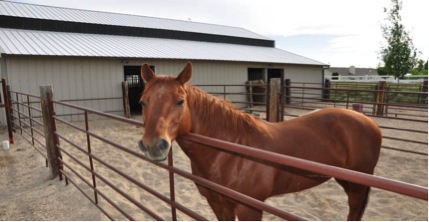When it comes to wound treatment of horses, owners need to be fully prepared and systematic when dealing with the injury, even if the wound isn’t severe. There’s a process that can be followed when it comes to injury treatment and care, as your vet won’t always be there, neither will you be inclined to call them for little scratches or falls.
Below are some wound types that the horse owner should know how to differentiate between;
Incised Wounds: Are caused by sharp objects and will bleed quite heavily if blood vessels are cut. The wound will have clean-looking edges.
Tears: Have more jagged edges, as they are often caused by barbed wire. These wounds will bleed almost as badly as an incised wound.
Puncture Wounds: These don’t bleed as heavily as they are normally caused by a small, sharp object such as nails. However, the wound can become fatal if a major blood vessel is punctured instead.
Abrasions: These are caused by friction, normally due to rope burns, and involve only minor injury to the hair and skin. Often, the wounds will seep body fluids or blood, especially if the wound is deep.
Contusions: Otherwise called an internal wound, in this type, the tissues have been not only damaged but are also bleeding, even though the skin is still intact. There will also be swelling around the affected area.
The Process of Wound Care and Treatment
Although most wounds can be easily treated and taken care of by the horse owner, in some cases, it’s better to involve a veterinarian who has experience in dealing with horse wound care and treatment.
Control the Bleeding
This is the first step that’s followed in the treatment of any wound. To do this, you must apply direct pressure to the wound area, which will be enough to stop the bleeding. If, however, the flow doesn’t stop and blood still spurts out from the wound, then it’s better to call in a vet.
Clean the Wound
This will be properly done once the bleeding is under control. The idea behind this is to make sure that the wound is completely free from dirt and any other foreign objects. Use of antiseptic is not necessary, neither of disinfectant; although you can use some mild soap and water. A moderate flow of clean water or saline can also be used to get the job done.
Make the Decision of Bandaging the Area or Not
If necessary, you must also bandage the area of the now cleaned wound. There are a lot of benefits that will help make this decision, the primary one being that bandages restrict movement which greatly helps with the healing process. This also negates the need for placing the horse in a paddock, until the wound gets better.
Taking care of a horse is a full-time job but well worth the effort in the end. Of course, while it’s a good idea to be directly involved in wound care, treatment and management of your horse, sometimes it’s better to call in the professional, who is better qualified to treat some of the wounds you cannot handle.
